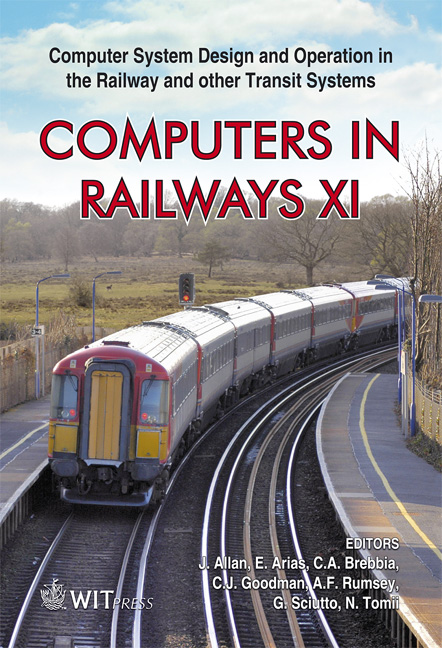Influence Of Vehicle Unsprung-mass On Dynamic Wheel Load
Price
Free (open access)
Transaction
Volume
103
Pages
10
Page Range
715 - 724
Published
2008
Size
499 kb
Paper DOI
10.2495/CR080691
Copyright
WIT Press
Author(s)
M. Miwa, Y. Kawasaki & A. Yoshimura
Abstract
Dynamic wheel load variation is one of the major causes of railway track deterioration and ground vibration. Lightening of vehicle unsprung-mass is more effective on reducing dynamic wheel load than that of sprung or intermediatemass. In this paper, we estimate and discuss this effect by combining the following three methods; (1) field tests and measurements with a special equipped train, (2) an experimental method with a unique test facility and real track, and (3) a computer simulation which can calculate dynamic interaction between vehicle and track. Keywords: vehicle-track interaction, computer simulation, test facility, field measurement, dynamic wheel load, unsprung-mass. 1 Introduction The vehicles for Tokaido Shinkansen trainsets replaced lightweight ones in the period 1992 to 2004 for the purpose of maximum operation speed up from 220km/h to 270km/h. The axle load of the vehicles was reduced by about 29%, which contributed to preventing an increase in track maintenance and/or ground vibration. However, at that time, we did not have a clear idea of which weight among the unsprung, intermediate and sprung-mass in a vehicle should be reduced. Through our studies since then, it has become clear that the unsprungmass effects most significantly the dynamic wheel load variation, which may deteriorate railway tracks. Three methods, field measurement with the test train, experiments in a laboratory with a large scale test facility and computer simulation of vehicle-track dynamic interaction, are used for these discussions.
Keywords
vehicle-track interaction, computer simulation, test facility, field measurement, dynamic wheel load, unsprung-mass.





